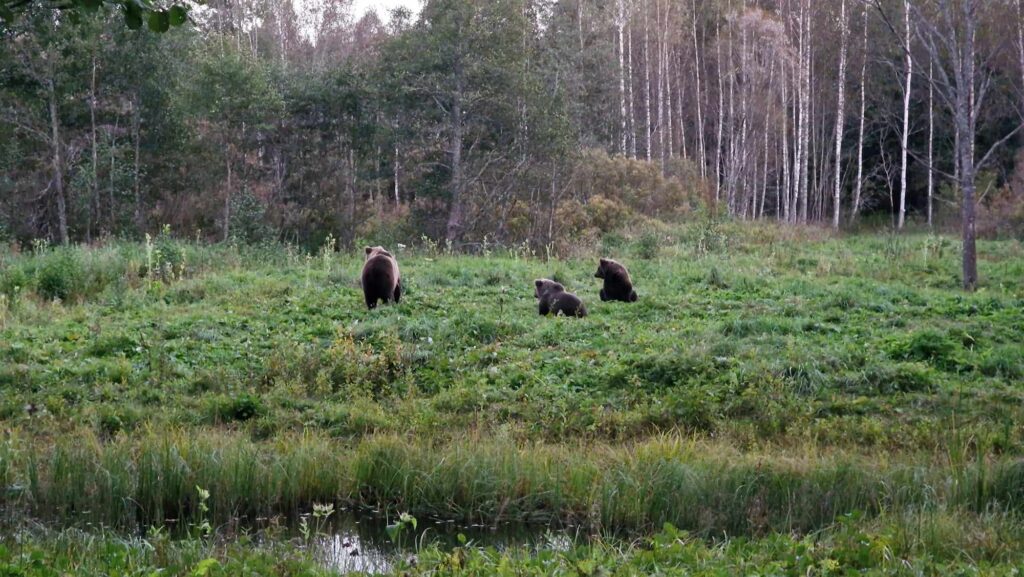Usually, bears rarely come to our hides with their little cubs because they are very cautious. Unavoidably, people entering the hide leave behind scents, other bears and wild animals roam around, and therefore bear families are not exactly everyday visitors for us. If someone wants to see bear cubs, it’s better to visit us in late summer and autumn, as the cubs then are about the size of a large dog, capable of escaping or climbing trees if there’s danger, and mothers feel braver moving around with them.
However, this year was different. From the second half of summer, visitors to the bear hides were able to observe a mother and her two cubs. At the end of summer, another family joined them, consisting of a mother and two cubs as well. In autumn, another mother with three cubs was observed several times. Remarkably, solitary male bears were rarely seen on bear tours this autumn. It was very exciting to watch the interactions among bear families. It turned out that families are much more vocal than solitary bears. On calm nights, the microphone picked up the grunts and groans of the little cubs. Observing their scuffles, chasing each other, and climbing trees from the window was extremely thrilling, even for our seasoned nature guides.
Another interesting fact is that this situation was not only at our bear hides; we heard the same from several hunters and nature enthusiasts, whose trail cameras primarily captured mother bears with cubs this autumn. Was 2024 truly a year of abundance for bears in Estonia (or at least in Alutaguse), or was this some behavioral peculiarity that occasionally occurs? Hopefully, we will soon learn more from the Estonian Environmental Agency’s wildlife monitoring reports.

I must admit that it’s good to realize that just when I think I’m starting to understand how things work in nature and see some patterns, an observation, situation, or season comes along that completely changes everything, and I realize that I actually don’t understand anything. This is what makes the job of a nature guide so free from routine.
Now, the cubs are getting ready for winter sleep, and the bear watching season is over. We will reopen the hides at the end of April 2025.
